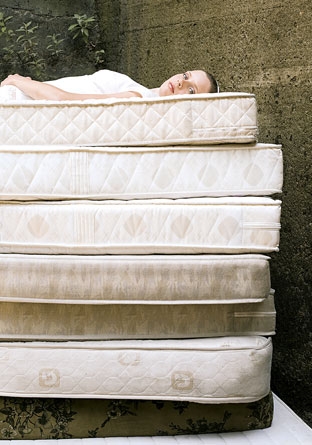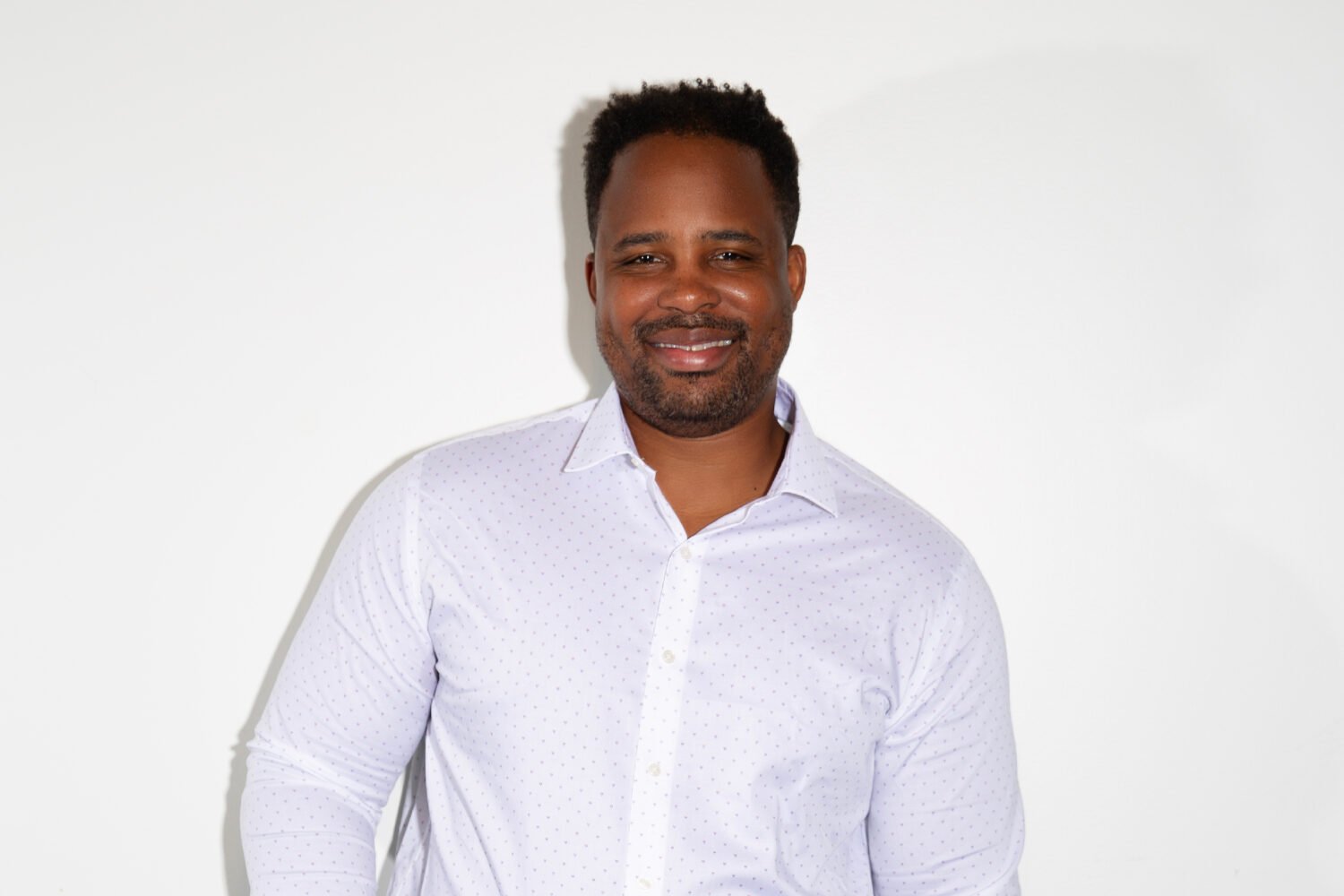
Related >> Why You Should Try A Sleep Lab
I am a bad sleeper. In junior high school, I earned the nickname Princess and the Pea after I woke up at a friend’s house and complained about the bedding.
“I felt the mattress poking me all night,” I told her. In an effort to prove I was crazy, she reached under it only to find a bobby pin.
My grievances continue to pile up. Lately, they concern my current mattress, Tempur-Pedic’s Deluxe bed, which makes my right leg feel as if it’s been shot with Novocain.
It’s time for a new bed. But how can you commit to something you’ll use for so many hours a night (at least eight in a perfect world) for so many years (the average mattress lasts eight to ten years) without trying it out first? I test-drove a parking lot’s worth of cars before settling on a Honda and kissed a lot of frogs before marrying Karl.
So why can’t I sleep on a few beds before committing to spend 23,360 hours in one? Fortunately, Karl works for Healthy Back, a national chain headquartered in Beltsville. With the permission—and raised eyebrow—of company owner Tony Mazlish and an overnight bag containing our pajamas and toothbrushes and a couple of flashlights, my husband and I have come to do just that.
10 PM
“I have to admit,” says Fairfax store manager Jeremy Brown before locking us in for the night, “this is a bit weird.” Most people, he says, spend just eight minutes trying out beds.
Brown spent the past half hour giving me the lay of the mattress land. With 17 models on the floor, there’s a lot of choice: foam, latex, and a combination of both. There’s not a spring in the store.
As a tour highlight, Brown dropped what looked like a pinball onto a chunk of latex and then onto a section of memory foam. “Watch this,” he said as the ball rebounded five inches in the air. This bounce—or pushback—makes a latex bed feel most like a traditional coil mattress. When he released the pinball onto the memory foam, it landed with a motionless thud.
“See how the foam molds around the ball?” Brown said. “The foam absorbs the energy and doesn’t create pressure points.” (That’s what springs do.) It also allows you to move around without your bedmate feeling the motion.
Karl begins laying our comforter over the first contender, Sealy’s Embody Shelter, a synthetic-latex bed with a special Polartec casing that’s supposed to make the mattress cool and breathable.
MIDNIGHT
The firmest of the latex lot, the Embody Shelter ($2,999—all prices are for queen size) is so unyielding, it feels as if it needs to be broken in. Though we’ve set our alarm to go off every 90 minutes, I pull up stakes after ten minutes and move us over to the Embody Insightful ($1,699).
“It’s like sleeping on a cloud,” Karl sighs. The Insightful—a foam/latex hybrid—is definitely softer while still stable, like a cloud on top of a supportive latex core. Despite the unsettling glare from the floodlights in the parking lot and the feeling that I’m sleeping in a gigantic fishbowl, I drift off.
Related >> How to Cure Insomnia at Home
1:30 AM
When the alarm sounds, I’m reluctant to get up. Karl is even more so. He drags his pillow behind him and sleepwalks over to a hybrid bed by Dormia ($1,499), which features both latex and memory foam.
“This will take a little time to heat up,” says Karl before falling back to sleep. He’s referring to the memory foam, which is softened by body temperature. In the ensuing 90 minutes, the bed never gets soft enough and hits just the right pressure points in my hip to make my leg, but not me, fall asleep.
3 AM
The TrueForm Cool Springs ($1,484) is Sealy’s answer to Tempur-Pedic, the mother of all memory foam. Tempur-Pedic was developed by NASA and immortalized by the unspillable-wineglass commercial. At this point, I could pass out on a bed of nails. Which is a little what the TrueForm feels like. I hop next door to the Tempur-Pedic Classic ($1,699), which is equally uncomfortable. Built with fewer layers of foam, it’s the firmest bed I’ve tested all night. Though I’ve been operating under the impression that I want a firm bed, I begin to wonder if softer is the way to go.
4:30 AM
I ask myself: What would Oprah do? Fortunately, I can at least get a feel for what she’d sleep in. Karl and I continue our march across the store and flop into Tempur-Pedic’s Rhapsody bed ($2,899), the same one Oprah touted on one of her shows. With a high-density layer sandwiched in the middle and a softer, fluffier top, this mattress is the big O of bliss. I fall into a deep sleep and have a dream about shoplifting the matching Rhapsody pillow ($199).
6 AM
Our night ends in a virtual Tempur-Pedic Experience—a fully enclosed, make-believe bedroom in the back of the store complete with teak nightstands, frosted panels, and a plasma-screen television on which earlier I watched a video showing images of waterfalls, sand dunes, and a very pregnant woman reclining on a mattress. “Your bed should always give you comfort,” said the voiceover.
The bed here is the Allura ($4,099). It’s like the Rhapsody on steroids: two high-density layers instead of one with an even plusher top. It’s like sleeping on a cloud on top of a marshmallow—but it’s not squishy.
8 AM
I awake to see, on the nightstand, a framed photo of what looks like a Balinese grass hut. For half a second, I think I’m in a Four Seasons and not a strip mall. My body is loose and unkinked, as if it’s been massaged with warm oil. And after just two hours of sleep, I feel alert enough to ace the SATs.
“Can a bed really do all that for you?” I ask Karl.
“This one can,” he says, then rolls over.
Staring at the ceiling, I wonder why more mattress stores don’t operate as hotels after hours. Not that I enjoyed spending the night in a strip mall, but it is a good way to test-drive a mattress before making the commitment. Maybe I’ll present a business plan—after I sleep on it.
This article first appeared in the January 2011 issue of The Washingtonian.
Subscribe to Washingtonian
Follow Washingtonian on Twitter
More >> Health | Top Doctors | Well+Being Blog















